Australia is due a political realignment.
The split in the Liberal-National coalition this week could be a good thing if it allows more differences of opinions and for the parties to reflect on who they have become and where they are going (although it must be said, only one of these parties has lost a large number of lower house seats over the past two elections).
As the Institute of Public Affairs’ Daniel Wild (my old boss) said:
‘The intellectual cupboard has been bare on the centre-right for some time… More voices and more alternatives in the political system is a positive thing. This split may strengthen both the National and Liberal parties and in doing so Australia.’
In recent years, Australians have increasingly sought a different kind of political representation. The decline in the primary vote going to the major parties and the rise of independent candidates has been much discussed. This discussion, however, appears to have taken place mostly been in the post-1975 context.
Greg Sheridan wrote in The Australian that ‘crumbling two-party systems make it ever less likely that governments can confront structural issues such as chronic deficit, ballooning debt, out-of-control immigration, and urgent defence needs.’
Seeing as these problems have beset Australia for the past two decades, while the two-party system has worked as he wants it to, and seeing as major splits and political realignments have occurred at such times as during the first world war, during the Great Depression, and during the second world war, I’m not sure that Sheridan’s analysis is correct.
Australia existed before 1975. It even existed before 1945.
Looking back, we can see that there should be nothing frightening in new political representation. There is nothing odd about political parties coming and going, changing and reforming, realigning over time to the changing desires of the Australian public.
We would do well to remember that the Liberal Party, the National Party, and the Labor Party have not always existed. They may not always exist. This is not a bad thing.
Previous political reforms and realignments
The current Liberal Party is the second Liberal Party that Australians have known. The first Liberal Party was created in 1909 as a result of the ‘fusion’ of the Protectionist and Anti-Socialist parties, the latter of which had only three years previously changed its name from the Free Trade Party.
In 1901, the main division in Australian politics was between protectionists and free traders. By 1906, it was apparent that Australians wanted protectionism rather than free trade, and George Reid as leader of the Free Trade Party decided to change the party’s name to the Anti-Socialist Party in an effort of political realignment. The main political debate, as he saw it, was no longer about free trade and protection, but Laborite socialism against anti-socialism.
This realignment eventually gave way to that first Liberal Party which was formed not on the basis of a shared set of values and policies, but on the basis of being anti-Labor.
The Labor Party ruled, on and off, until 1916 when the Prime Minister, Billy Hughes, caused a split over the question of conscription during the first world war. Hughes established a new National Labor Party which formed a minority government with support from the Liberal Party until, in 1917, they joined together to form a Nationalist Party.
The Nationalist Party ruled in its own right until the 1922 election when the newly created Country Party (which would later become the current-day National Party) gained the balance of power in the lower house. The Nationalist-Country coalition was formed.
In 1931 there was another split in the Labor Party when a group of dissidents, led by Joseph Lyons, broke away over differences about how government should respond to the Great Depression. Lyons and his followers merged with the Nationalist Party and formed the United Australia Party, which won the federal election held at the end of the year.
In 1934, the UAP entered into a coalition with the Country Party and they governed (with some disruption to their coalition agreement) until 1941 when two independents, Arthur Coles and Alexander Wilson, who had since the 1940 election supported the minority UAP-Country Party government decided to bring the government down.
At this point, in October 1941, two years into the second world war, the centre-right coalition government was brought down and the Labor Party under John Curtin (supported by Coles and Wilson) formed government.
After Curtin’s Labor Party won an emphatic victory at the 1943 election, the UAP and Country Party terminated their coalition agreement. A period of soul-searching resulted in the end of the UAP which was largely folded into the new Liberal Party founded by Robert Menzies, the Liberal Party that still exists today. Ahead of the 1946 election, the Liberal Party and the Country Party re-established a coalition which survived largely intact until this week. It now appears, however, that the 2025 split may have lasted only a matter of days.
Reform is a good thing
The pace at which new political parties were created and efforts at realignment were made in the decades after Federation may seem remarkable now. Part of how Australia has changed culturally since then is that we have become more bureaucratised, and therefore more sclerotic, cautious, and process-oriented.
This is not unique to Australia, nor is it unique to the modern bureaucratic state. The German scholar Hans-Ulrich Wehler, reflecting in the 1980s on the history of the German Empire after 1871, wrote that this process of bureaucratisation affects ‘all societies which show a high degree of specialisation and division of labour’, and not just in government or the public sector.
Wehler wrote that the process of bureaucratisation ‘made great strides in Germany’s political parties and pressure groups, in trade and industry, banking and transport’. The process of bureaucratisation becomes pervasive. It afflicts the private as well as the public sector, and has a profound effect on the culture and character of a nation and its people (which is a topic I will return to in the future).
David Littleproud’s decision to force a split in the Liberal-National coalition fits comfortably in Australia’s political history and traditions, even though some might be a bit uncomfortable with it because it does not fit well with our cautious culture.
It is not that radical a decision anyway. It is hard to think of a less risky time to split a coalition than when it is in opposition and when it has just been rejected at an election. The broad-brush overview above shows that far more daring splits and realignments have occurred, including during each of the two great global conflicts of the 20th Century. The most obvious historical parallel to the 2025 coalition split is the one after the 1943 election which eventually led to its very creation.
The Liberal-National coalition does not have a natural right to exist. Nor does either of those coalition parties themselves. Nor does the Labor Party. They exist only because of the mutual agreement of their constituent parts. They exist only for the purpose of winning votes and forming government. If they fail to do this, it makes sense for them to re-evaluate if they are functioning correctly and ask themselves if they need to change.
Australia has experienced a number of major political realignments and reformations. Most of these have required the splitting of a party or coalition, or the creation of a new party or coalition. Very few have occurred as a process of internal reform while keeping the branding the same.
Australians are clearly seeking something new from politics. The structural decline in the primary vote going to the Labor and Liberal parties, and the rise of independent candidates, is evidence of this.
But past experience has shown that a successful realignment is far more likely to come from existing political leaders rather than from an outsider.
What the outcome of this latest split will be, no one knows. But to worry about it happening, rather than embracing the opportunity it presents, is to be short-sighted.


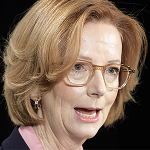
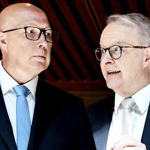
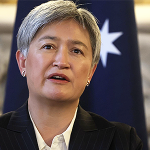
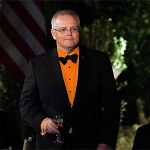
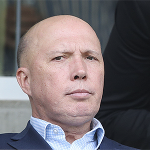



https://shorturl.fm/5JO3e
https://shorturl.fm/A5ni8
https://shorturl.fm/YvSxU